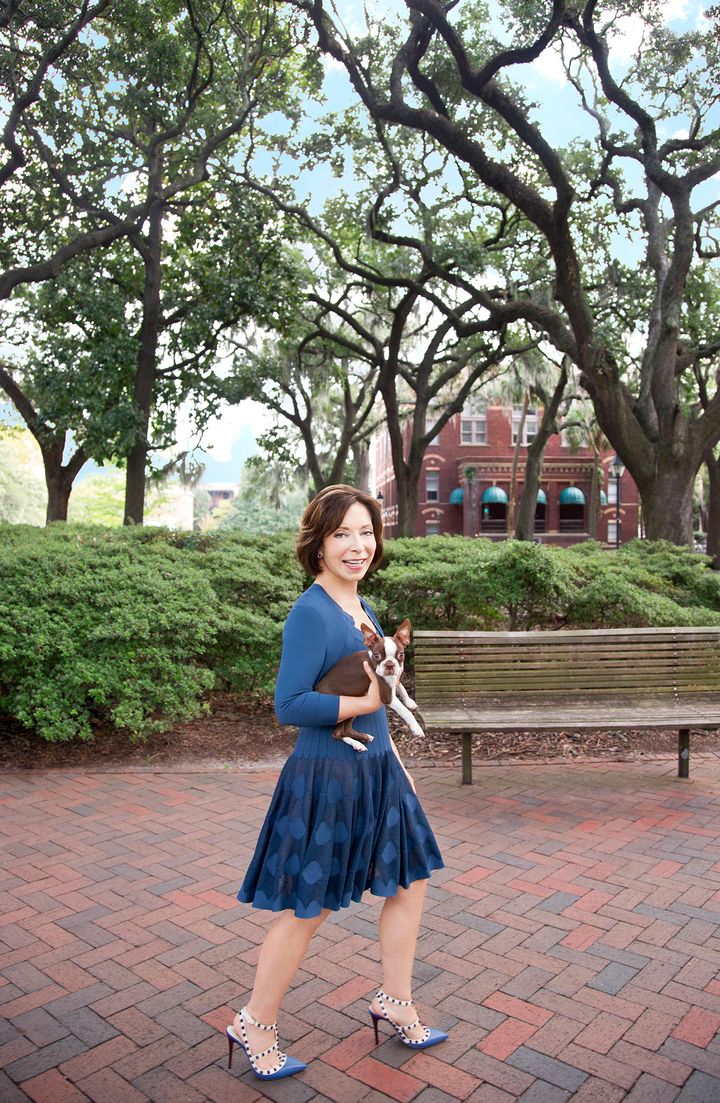
Alaïa's designs have always been known for their precision in cut and feminine form. I wore this outfit when interviewing ABC World News Tonight anchor David Muir for On Creativity. I also recall wearing Alaïa when I was inducted as a Trustee in the Georgia Historical Society a few years ago. His dresses roll up easily for travel and are very distinctive. You know an Alaïa when you see it.
I was deeply saddened recently to learn of the passing of one of the most fiercely singular designers in the history of fashion, Azzedine Alaïa. Known to dear friends as mon papa, the man was a towering lion of couture and ready-to-wear for generations. Azzedine was that rare designer, rejecting the corporatization of fashion while simultaneously beloved of industry stalwarts.
The New York Times has called him a "sculptor of the female form," as much an artist of the human body as a designer of clothes. Even if you've never heard of Azzedine Alaïa, chances are you've seen his work, from Bond films to 1990s cult classics. When news of his death was revealed, the surge of social media encomia bore witness to his influence in art and culture.
Like so many cultural geniuses, Azzedine demonstrated a polymathic range of talent, designing costumes for ballet and opera, regularly exhibiting works of art around the world, and according to some reports, had planned to open a bookstore. Our SCAD students should heed his example: Master a skill outside your immediate area of expertise. Never stop creating. Creation is life.
Azzedine was widely admired for his passionate independence during a time when so many designers rely upon stockholders and investors to sustain global careers. "Alaïa was one of the industry’s few designers willing to follow his own conventions and ignore fashion schedules, creating his collections at his own pace," reports The Business of Fashion. "His skill at cutting and his idiosyncratic takes on classic silhouettes have made Alaïa popular for decades; his designs remain the aspirational zenith for many."
Nonfiction writer and SCAD alumna Anne Royan, who once worked for Harper's Bazaar, remarked on his peerless reputation among those hallowed halls of fashion. "In an industry where the newest and the latest are highly prized, Alaïa was a name that was held aloft and respected in a timeless admiration," she said. Tastes changed often, but everybody always agreed on Azzedine Alaïa. "He moved seamlessly through a changeable world without changing what mattered most, and he left it better because everyone who had the pleasure of working with him raised themselves to a higher level in his presence."
Like so many SCAD students and graduates, Azzedine's love for art and design came early. In his Tunisian childhood, on the northern coast of Africa, he was encouraged in his artistic interests by a family friend, who helped him enroll in the École des Beaux-Arts in Tunis, against family wishes. From there, he peregrinated to Paris in 1957, eventually leveraging his prodigious tailoring skills into an entry-level job with Christian Dior. He opened his first studio 22 years later, in 1979, the same year SCAD first enrolled students.
His first Atelier was inside his apartment, providing an intimacy for his clients that persisted throughout his career, an impressive clientele that included a breathtaking range of popular culture, from Greta Garbo to Lady Gaga. His clients were loyal to Azzedine because he proved far more than a designer; he was a host, opening his home to friends and new acquaintances at every turn. The New York Times notes that his kitchen was one of the best places to find Azzedine working, "where he was famous for holding free-flowing lunch and dinner gatherings, for which he often cooked."
I was fortunate that our paths crossed on occasion in my work to build SCAD into the preeminent university for the study of fashion and related disciplines. My husband Glenn and I were lucky to be invited one memorable day years ago to Azzedine's home in Paris for lunch. I had heard of his skill with a saucepan and was not disappointed! He cooked a sublime pasta dish for our small dining party, and we sat with him, his partner, and his staff, talking and eating and laughing.
Shadows moved across the room, and afternoon became evening, and time felt the greatest luxury of all. Azzedine's St. Bernard lay on the cool tile floor of the kitchen, and all was very familial and peaceful. (In WWD, Lady Gaga recounts a similar scene.) After our long and languorous lunch, Azzedine walked us around his home, and downstairs was his very discreet-from-the-street Atelier. One could easily walk right past it — no showroom windows, no beckoning danceclub beats, just Alaïa incised in limestone over the door. Elegant, timeless.
Given his own debt of gratitude to arts education, Azzedine had a special place in his heart for students of art and design, and he magnanimously loaned SCAD many works from his private collection of photography, which we exhibited at SCAD Atlanta and SCAD Savannah. These photos were of his longtime muse, the legendary model Bettina, taken over many years by an extraordinary assemblage of photographers.
In 2010, Bettina actually visited SCAD to speak to students, and sometime later, she hosted Glenn and me at her handsome home in Paris, showing us an outfit Azzedine had sent over for her to wear during Paris Fashion Week. This was many years after she retired as a model, exemplifying his lifelong loyalty and consideration for his collaborators and creative partners.
I commend the life and example of Azzedine Alaïa to SCAD students and graduates around the world. He was one of the most important and influential designers of his generation, and more importantly, he was human, treating all he met with kindness and hospitality — new friends and longtime creative partners, undiscovered young designers and global personalities alike. The time he gave to others, in cooking and conversation and the magnificent clothes he designed and made, is a gift not soon forgotten, which made wearing his designs all the more special.
May his memory not soon be forgotten.
***
Paula Wallace is the founder and president of SCAD, a private, nonprofit, accredited university with over 100 academic degree programs and locations in Atlanta, Hong Kong, Lacoste, Savannah, and online. Around the globe, SCAD enrolls nearly 2,000 students in 14 degree programs across six disciplines focused on the full array of fashion-related industries. This year, Business of Fashion named SCAD’s luxury and fashion management program No. 1 in the U.S. The program also ranked No. 1 for learning experience in the world and the U.S. and for long-term value in the U.S. Additionally, the SCAD graduate fashion program ranked No. 1 for learning experience in the U.S.
